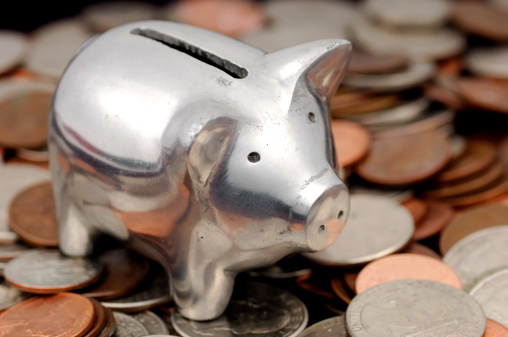Everyone seems to be guessing about the future and near-term expectations after the recent market panic. The first thing that needs to be considered is that trying to call a bottom in a market is generally a guessing game, and sometimes it can feel like trying to catch falling daggers dropped off a skyscraper. That being said, 24/7 Wall St. wanted to put some things in perspective for investors about 2015 so far and the panic that has hit the markets.
So, again without trying to call a bottom, it was interesting to view some of the destruction and balance it with some things that are not so destructive. We have even used several exchange traded funds (ETFs) so that investors can rapidly review and verify some of these trends.
S&P 500 Stats
Of the S&P 500 Index members, exactly 250 of the 500 were negative for the year as of Thursday’s close. Among losses greater than 10%, 132 of the 500 were in the red. Some 43 of the 500 stocks were down 25% or worse, and 16 were down by 40% or more.
DJIA Stats
The Dow Jones Industrial Average (DJIA) was down roughly 3.5% coming into Friday’s open, if you include the dividends from the DIAMONDS, or the SPDR Dow Jones Industrial Average ETF (NYSEMKT: DIA). Of the 30 DJIA stocks, 14 of them stocks were negative on the year. There were 10 DJIA stocks down 10% or more, while only five were up more than 10% year to date. And also on those dividends, 14 of the DJIA stocks now yield 3% or higher.
ALSO READ: 7 Countries Near Bankruptcy
Treasury Bonds
To compare stocks to bonds: The 10-year Treasury yield is back down to 2.06%, and the 30-year Treasury yield is back down to 2.75%. The high yield on the 10-year in 2015 has been 2.49%, after a high of just over 3% in early 2014. The high yield on the 30-year for 2015 has been about 3.25%, versus a high of almost 4% in 2014. The iShares 20+ Year Treasury Bond (NYSEMKT: TLT) was up 1.5% coming into Friday’s opening bell.
Fed Funds: Rate Hikes
The fed funds futures have now indicated that December is the first month with a 100% chance of a fed funds rate hike, to only 0.25% at that. Until very recently, October was the bogey — and some are still talking about rate hikes starting as soon as September.
The Fear Index: The VIX
The volatility or fear index, the CBOE Volatility Index for the S&P 500, was indicated up at 22, after having closed at 19.14 on Thursday.
China and Shanghai
Shanghai needs to be put in perspective here, even as PMI hit a 77-month low. This is perhaps the biggest volatility cause for the markets this year. The SSE peaked at 5,166 and closed down over 4% at 3,507 on Friday. That market could even have further to go based on its history and if you compare to the Nasdaq tech bubble of 2000. Either way, Shanghai is down 32% from its peak in 2015, but it is still up 8% so far year to date. ETF notes:
The ETF for most of China is the iShares China Large-Cap (NYSEMKT: FXI), and it was down 9.5% so far year to date in 2015, but is down 29% from its 52-week high in 2015. The Deutsche X-trackers Harvest CSI300 CHN A (NYSEMKT: ASHR), which tracks the A-Shares in Shanghai, is down 35% from its peak in 2015 but is down only 4% year-to-date.
ALSO READ: The Crowded Momentum Trades May Be Over: Time to Buy Quality
Gold and Oil
Gold may be back up at $1,150 or so on this latest uncertainty, but gold is now down only 2.5% so far from the end of 2014. This was measured by the performance of the SPDR Gold Shares (NYSEMKT: GLD). Outflows from the ETF market in gold have stalled. Oil remains in the tank, and every attempt to bottom-fish has been met with disappointment. West Texas Intermediate (WTI) crude was last seen down over 2% at $40.40, but so far $40 has held — so far. The market just feels like it wants to break under $40.
Emerging Markets
The emerging markets have been pounded as well. The iShares MSCI Emerging Markets (NYSEMKT: EEM) is now down 27% from its 52-week high and down just over 14% year to date. Investors just need to consider that this ETF is dominated by China and Asia.
Greece
Greece remains a market that cannot seem to find itself. The bailouts had been approved, but now Tsipras has called a snap election to solidify his power, even after having to have backed down from his original demands to stay in the euro. The Global X FTSE Greece 20 ETF (NYSEMKT: GREK) is down over 55% from its 52-week high, and it is down by about 29% year to date.
U.S. Dollar Strength
The U.S. dollar was last seen around $1.13 per euro, and the 52-week range is $1.0458 to $1.3297. China has taken further steps to remove its dollar peg, yet the dollar’s strength has been a continued source of profit and revenue eating against the part of corporate America that relies on exports. What if China’s move here ends up being good long term?
********
Again, there is no serious effort here trying to peg a bottom. It is August and the end of the summer doldrums. This is far from a full spectrum review for the global markets, and much has been skipped over that may have been important. Even Jeff Hirsch of the Stock Trader’s Almanac has warned that the dog days of summer might not be over yet.
ALSO READ: Jefferies Has 4 Sustainable Income Stocks to Buy Now
Get Ready To Retire (Sponsored)
Start by taking a quick retirement quiz from SmartAsset that will match you with up to 3 financial advisors that serve your area and beyond in 5 minutes, or less.
Each advisor has been vetted by SmartAsset and is held to a fiduciary standard to act in your best interests.
Here’s how it works:
1. Answer SmartAsset advisor match quiz
2. Review your pre-screened matches at your leisure. Check out the advisors’ profiles.
3. Speak with advisors at no cost to you. Have an introductory call on the phone or introduction in person and choose whom to work with in the future
Thank you for reading! Have some feedback for us?
Contact the 24/7 Wall St. editorial team.





